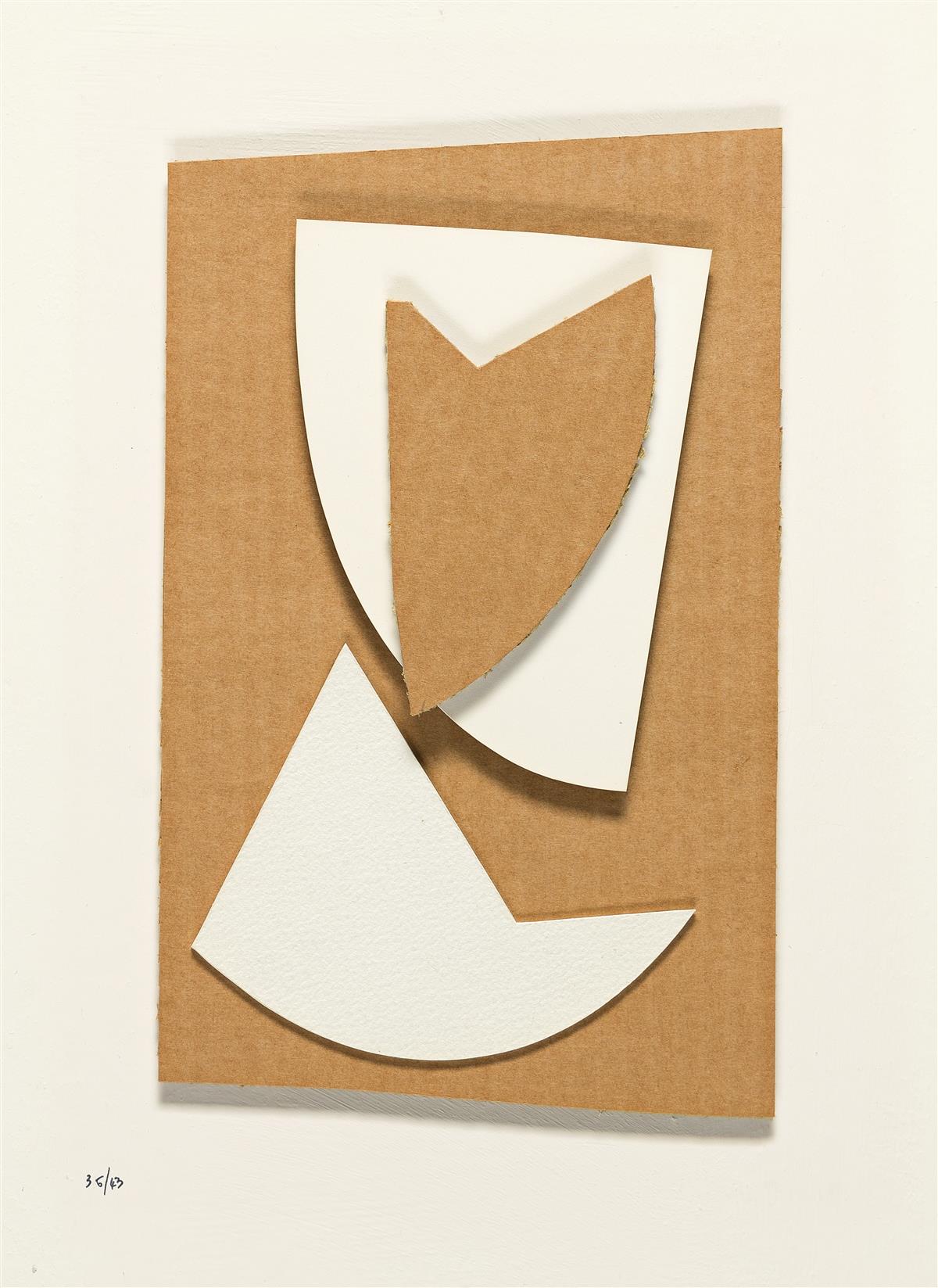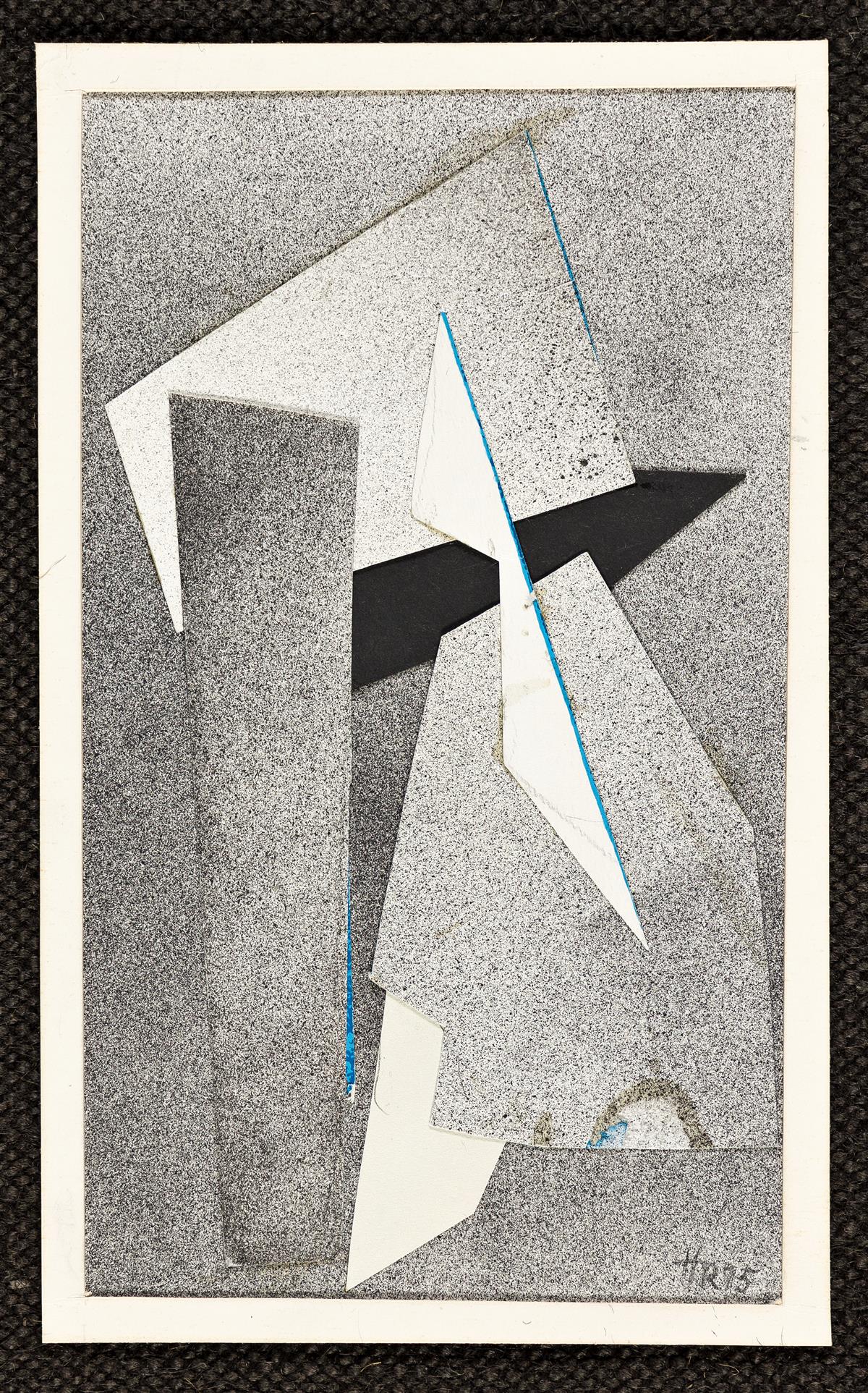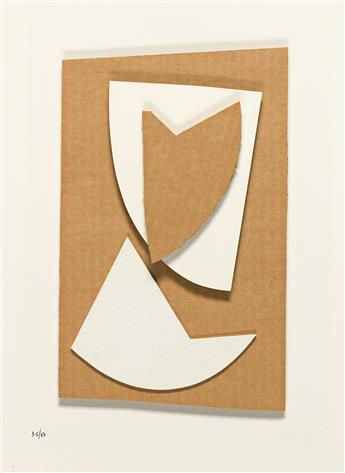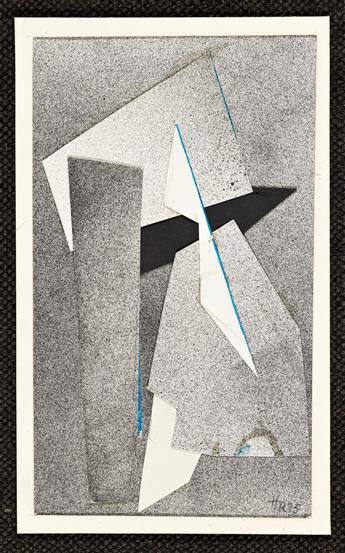Sale 2630 - Lot 216
Unsold
Estimate: $ 2,000 - $ 3,000
HANS RICHTER
Two collages.
Untitled, spray paint and paper collage, 1975. 235x142 mm; 9 1/4x5 5/8 inches. Initialed and dated in pencil, lower right recto * Untitled, mixed-media collage multiple mounted on board, 1970. 565x437 mm; 22 1/4x17 1/4 (sheet), full margins. Numbered 35/43 in ink, lower left.
With—A Group of 4 prints and posters. Untitled, etching, 1964. Artist's proof. Signed, dated, inscribed "epreuve d'artiste" and dedicated in pencil, lower margin. Simple Gestures, color screenprint, 1959. Initialed, titled, dated and dedicated in ink, lower margin * Untitled, color screenprint, 1943. Signed, initialed, dated and inscribed "original silkscreen" in pencil, lower margin. Hans Richter Oeuvres de 1912 a 1952, poster, 1952. Signed, dedicated and dated in ink, lower right.
Richter (1888-1976) was born into an affluent family in Berlin and started his art studies at the Academy of Fine Art, Berlin, and the Academy of Fine Art, Weimar in 1908-09. He became interested in modern art in 1912 when he discovered the Der Blaue Reiter and Der Sturm after which he joined avant-garde artistic circles. In 1914, he was drafted into the army, but was wounded and became partially paralyzed shortly after. In 1916, he went to Zurich to recover and met Hugo Ball, Tristan Tzara and Jean Arp, central members of the Dada group. Richter became closely involved with the movement, embracing its central tenets of the nonsensical and irrational as a response to the destruction of World War I and society's values of capitalism and nationalism. He contributed paintings and writings to its shows and publications, but one of his most influential projects was in film; Rhythm 21 was one of the earliest abstract films ever made, and show geometric shapes moving in space to music.
In the early 1920s, a cohesive Dada movement disbanded and its artists moved towards other art movements such as Surrealism. Many of its artists left Europe on the eve of World War II. In 1940, Richter moved to the United States and became a professor at City College in New York City, one of the earliest film schools in the country. He served as its director from 1941-1957. In 1964, he wrote Dada: Art and Anti-Art, in which he recounted the history of the Dada movement.
Two collages.
Untitled, spray paint and paper collage, 1975. 235x142 mm; 9 1/4x5 5/8 inches. Initialed and dated in pencil, lower right recto * Untitled, mixed-media collage multiple mounted on board, 1970. 565x437 mm; 22 1/4x17 1/4 (sheet), full margins. Numbered 35/43 in ink, lower left.
With—A Group of 4 prints and posters. Untitled, etching, 1964. Artist's proof. Signed, dated, inscribed "epreuve d'artiste" and dedicated in pencil, lower margin. Simple Gestures, color screenprint, 1959. Initialed, titled, dated and dedicated in ink, lower margin * Untitled, color screenprint, 1943. Signed, initialed, dated and inscribed "original silkscreen" in pencil, lower margin. Hans Richter Oeuvres de 1912 a 1952, poster, 1952. Signed, dedicated and dated in ink, lower right.
Richter (1888-1976) was born into an affluent family in Berlin and started his art studies at the Academy of Fine Art, Berlin, and the Academy of Fine Art, Weimar in 1908-09. He became interested in modern art in 1912 when he discovered the Der Blaue Reiter and Der Sturm after which he joined avant-garde artistic circles. In 1914, he was drafted into the army, but was wounded and became partially paralyzed shortly after. In 1916, he went to Zurich to recover and met Hugo Ball, Tristan Tzara and Jean Arp, central members of the Dada group. Richter became closely involved with the movement, embracing its central tenets of the nonsensical and irrational as a response to the destruction of World War I and society's values of capitalism and nationalism. He contributed paintings and writings to its shows and publications, but one of his most influential projects was in film; Rhythm 21 was one of the earliest abstract films ever made, and show geometric shapes moving in space to music.
In the early 1920s, a cohesive Dada movement disbanded and its artists moved towards other art movements such as Surrealism. Many of its artists left Europe on the eve of World War II. In 1940, Richter moved to the United States and became a professor at City College in New York City, one of the earliest film schools in the country. He served as its director from 1941-1957. In 1964, he wrote Dada: Art and Anti-Art, in which he recounted the history of the Dada movement.
Exhibition Hours
Exhibition Hours
Aliquam vulputate ornare congue. Vestibulum maximus, libero in placerat faucibus, risus nisl molestie massa, ut maximus metus lectus vel lorem.






